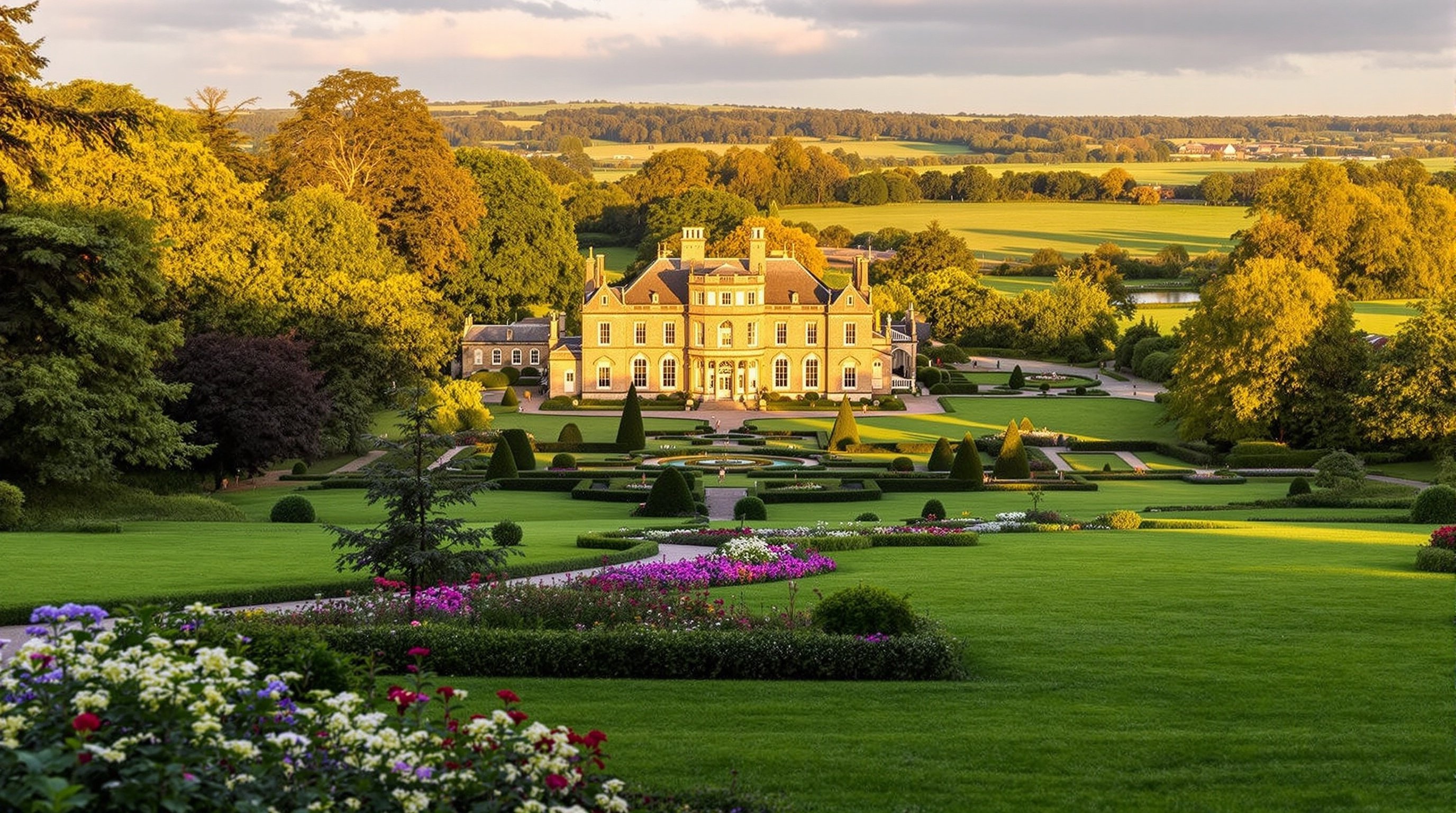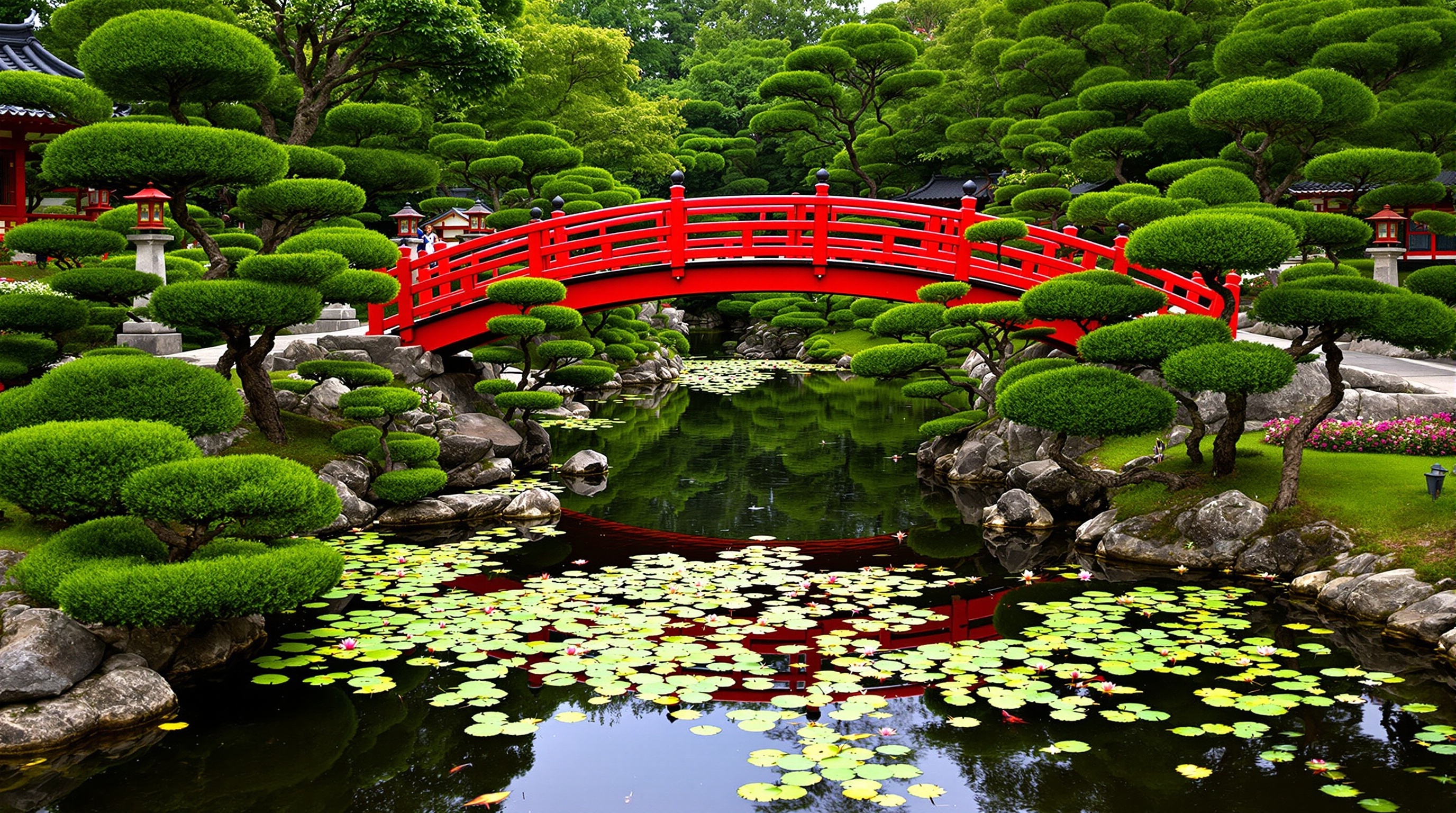
Tatton Park Cheshire: 1,000 Acres of National Trust Splendour
Explore the deer parkland, Japanese gardens, and historic mansion that hosts over 100 events annually at this iconic Cheshire estate.
Tatton Park encompasses 1,000 acres of deer parkland, 50 acres of landscaped gardens, and a neo-classical mansion in one of Cheshire's most visited National Trust properties. Located near Knutsford, this historic estate attracts over 700,000 visitors annually with its rare breed farm, Japanese Garden, and year-round events programme.
The estate hosts over 100 events annually, from the famous RHS Flower Show to outdoor concerts and Christmas markets. Whether exploring the mansion's grand rooms, walking the deer park trails, or discovering the walled kitchen garden, Tatton offers full-day experiences across different seasons.
The Mansion and Historic Interiors

The neo-classical mansion contains over 50 rooms spanning 400 years of additions and renovations. The Egerton family occupied Tatton from 1598 until 1958, when the 4th Lord Egerton bequeathed the estate to the National Trust.
Room tours reveal changing tastes from the 1750s library through Victorian modifications to 1930s additions. Each generation adapted the house whilst preserving earlier work, creating layers of architectural and decorative history.
The collection includes fine furniture, paintings, books, and ceramics accumulated over centuries. Highlights include Gillow furniture, family portraits, and an extensive library of first editions and rare volumes.
Specialist tours focus on specific themes like servants' life, architecture, or the Egerton family history. These deeper explorations suit repeat visitors wanting detailed knowledge beyond standard tours.
Gardens and Landscape Features

The 50-acre gardens showcase different landscaping styles developed over 200 years. The Italian Garden features formal terraces with statuary and topiary, whilst the walled kitchen garden grows heritage vegetables and cutting flowers.
The Japanese Garden, created in 1910, remains one of Britain's finest. Designed by Japanese workmen, it includes authentic tea house, Shinto temple, bridges, and carefully pruned plants creating miniaturised landscapes.
Seasonal interest extends year-round. Spring brings daffodils and magnolias, summer offers rose gardens and herbaceous borders, autumn showcases Japanese maples and beech trees, and winter reveals garden structures and evergreen planting.
The fernery uses Victorian technology to create humid conditions for exotic species. This microclimate garden demonstrates 19th-century plant collection enthusiasm and sophisticated glasshouse engineering.
Deer Park and Wildlife
The 1,000-acre deer park supports herds of red and fallow deer that graze the historic parkland. These semi-wild populations descend from deer introduced centuries ago as both landscape features and food sources.
Walking routes circle the park perimeter and cross the interior, offering views across rolling grassland dotted with ancient trees. The park's designed landscape follows principles established by Humphry Repton in the early 1800s.
Two meres (lakes) attract waterfowl including swans, geese, ducks, and occasional visiting species. The wetland margins support dragonflies, amphibians, and water-dependent plants.
Ancient parkland trees, some over 400 years old, provide habitat for bats, owls, woodpeckers, and invertebrates. The estate manages these veterans carefully, balancing public safety with conservation value.
Rare Breeds Farm
The working farm demonstrates traditional agriculture whilst conserving rare British livestock breeds. You'll meet Tamworth pigs, Longhorn cattle, and various sheep breeds that faced extinction as modern farming favoured commercial varieties.
Daily activities include feeding times, milking demonstrations, and seasonal events like lambing and shearing. These hands-on experiences connect visitors, especially children, with food production and animal husbandry.
The farm operates as a genuine conservation project, participating in breed society programmes to maintain genetic diversity. Several breeds here number fewer than 1,000 breeding females nationally.
Educational displays explain why breed conservation matters, covering topics from genetic diversity to traditional breed characteristics like hardiness, disease resistance, and meat quality.
Events Programme
Tatton's events calendar runs year-round, with major shows drawing tens of thousands. The RHS Flower Show in July brings top nurseries, garden designers, and celebrity speakers to one of Britain's premier horticultural events.
Outdoor concerts feature tribute bands and classical performances on summer evenings. Audiences bring picnics, settling on the sloping lawn as dusk falls and music fills the parkland.
The Christmas programme includes festive markets, mansion decorations, and Santa experiences. These events extend visiting season beyond the traditional spring-to-autumn period.
Specialist events cover topics like photography, heritage skills, and nature identification. These smaller gatherings attract enthusiasts seeking depth beyond general visiting.
Practical Visitor Information
Entry prices vary by areas visited. Park-only tickets cost less than full estate access including mansion and gardens. National Trust members enter free but pay for special events.
Opening times differ between the park, mansion, and gardens. The park opens daily year-round, whilst the mansion operates seasonally with shorter winter hours. Check current times before travelling.
Multiple entrance gates serve different areas. The main visitor entrance on Ashley Road provides easiest access to facilities, whilst the Rostherne entrance suits those wanting direct park access.
Allow 4-6 hours for comprehensive visits including mansion tour, garden exploration, and park walk. Focused visits to specific areas work well for repeat visitors or those with limited time.
Frequently Asked Questions
How much does it cost to visit Tatton Park?
Prices vary by areas visited. Park-only costs less than combined mansion, gardens and park tickets. National Trust members enter free except for special events. Check the website for current pricing.
Can dogs go to Tatton Park?
Dogs are welcome in the deer park on leads but not permitted in the gardens, mansion, or farm. The parkland provides excellent dog walking with multiple trail options.
How long does it take to visit Tatton Park?
A comprehensive visit takes 4-6 hours covering the mansion, gardens, and park. Shorter visits focusing on specific areas work well, with the gardens alone taking 2-3 hours.
Is Tatton Park open all year?
The deer park opens daily year-round. The mansion and gardens have seasonal hours, typically closing or reducing access in winter. Special events run throughout the year.
Are there deer at Tatton Park?
Yes, herds of red and fallow deer roam the 1,000-acre deer park. These semi-wild populations have inhabited the estate for centuries and form part of the historic landscape.
What is the Japanese Garden at Tatton Park?
The Japanese Garden, created in 1910 by Japanese workmen, is one of Britain's finest authentic Japanese gardens. It features a tea house, Shinto temple, bridges, and meticulously pruned traditional plantings.